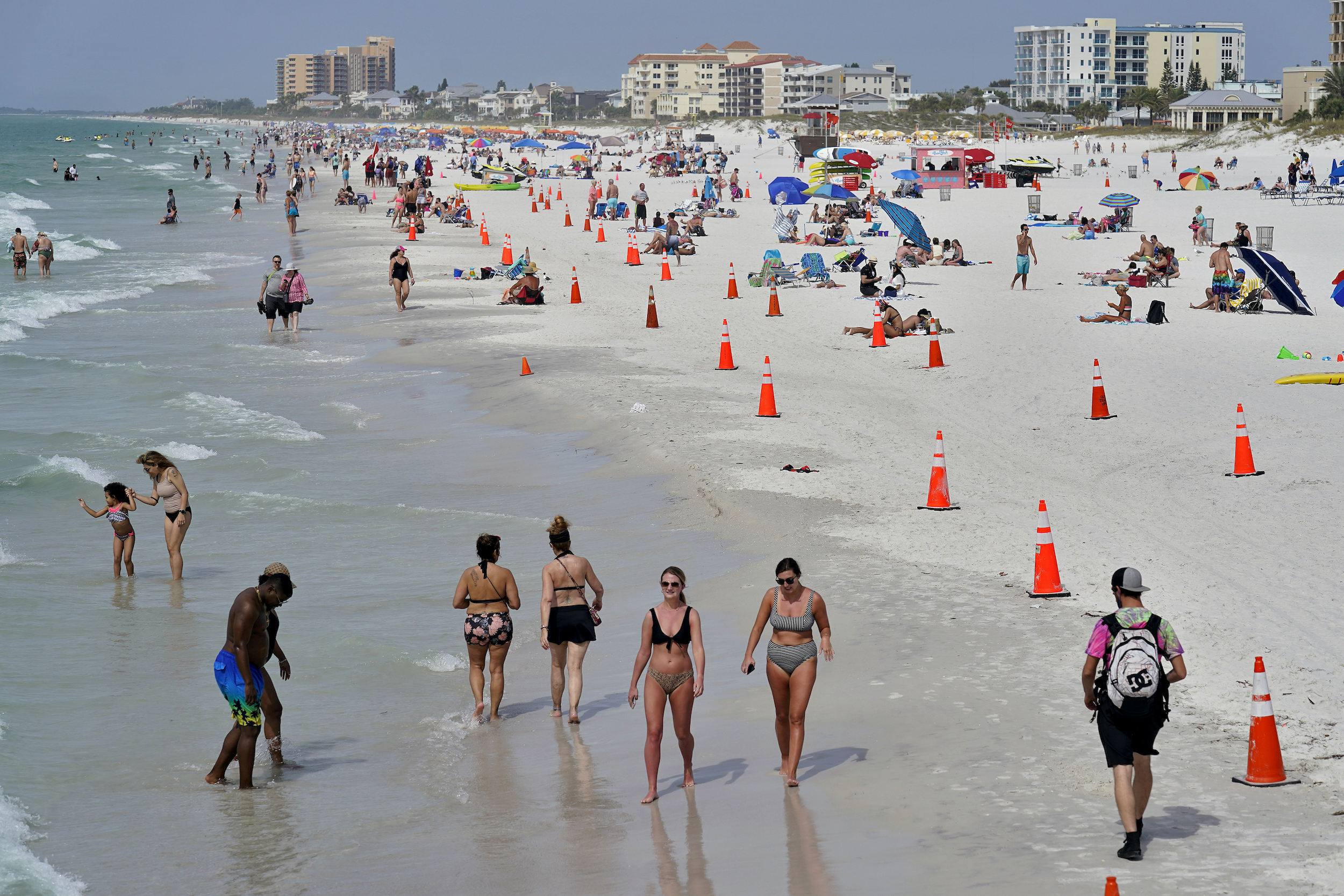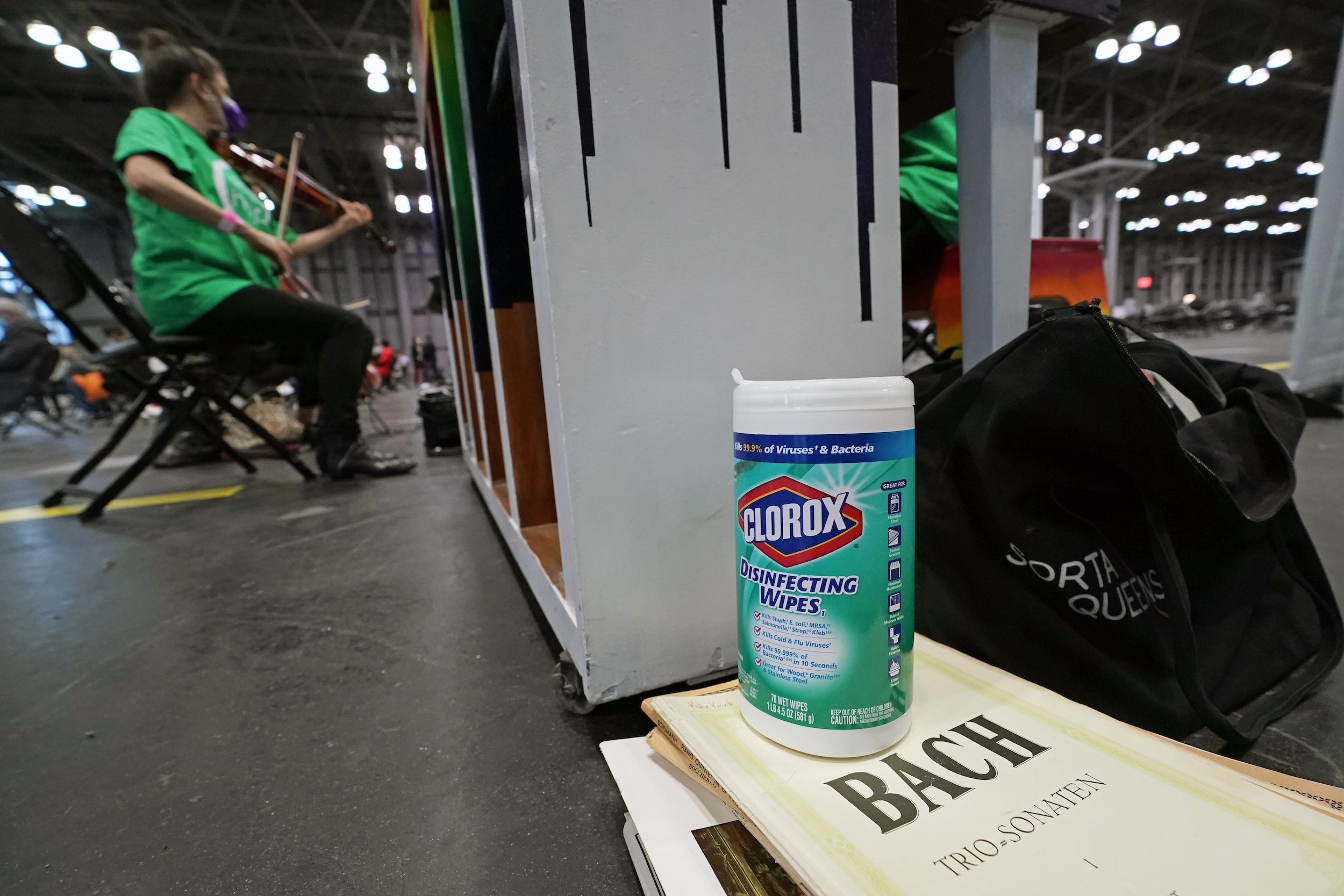 Covering COVID-19 is a daily Poynter briefing of story ideas about the coronavirus and other timely topics for journalists, written by senior faculty Al Tompkins. Sign up here to have it delivered to your inbox every weekday morning.
Covering COVID-19 is a daily Poynter briefing of story ideas about the coronavirus and other timely topics for journalists, written by senior faculty Al Tompkins. Sign up here to have it delivered to your inbox every weekday morning.
Comedian Heather McDonald collapsed and fractured her skull while performing at a comedy club in Arizona over the weekend. While the cause of her collapse is unknown, a publicist told local journalists in Arizona it may have been the result of dehydration.
But Fox News shamelessly promoted the notion that there is a connection between the performer’s collapse and her having been vaccinated.
NO LAUGHING MATTER: Comedian collapses on stage, fractures skull after declaring she’s triple vaxxed https://t.co/6t8qcYh9sz
— Fox News (@FoxNews) February 7, 2022
It is just the latest in a flurry of Fox social media posts linking vaccines with unproven reactions and posts calling anti-vaccine advocates “Freedom Fighters.” The Washington Post pulled together a collection of the latest posts.
How did Fox News make the connection between the collapse and the vaccination? TMZ reported McDonald had just delivered the second line of her set, saying, “I’m vaxxed, double vaxxed, boosted … and flu shot and shingle shot and haven’t gotten COVID and Jesus loves me most.” Witnesses said that as soon as she delivered that line, she collapsed.
McDonald’s social media feeds included this message:
This is another in a two-year-long string of correlation versus causation examples that have circulated during the pandemic. Over the years, I have seen some of these strange examples of how data and even incidents seem to make some hint of a connection — even though there is often no connection at all.
One recent scientific paper “studied the correlation between the global ranking of the Fédération Internationale de Football Association (FIFA) and the ranking of COVID-19 cases by country.” Oddly, the data lined up very well. It lined up so well, the researchers said, “This association was stronger than those of the prevalence of diabetes or obesity with COVID-19 risk.” But if you are serious about separating correlation and causation, you would consider many factors, as the researchers did in their conclusion:
Does this mean that people who are skilled in playing football are at increased risk of catching SARS-CoV-2 or of spreading it? Or does COVID-19 make you a better football player? This is unlikely to be the correct conclusion to draw from these findings.
However, there might be alternative explanations.
The mass gatherings at football stadiums early in the pandemic may have contributed to the spread of SARS-CoV-2 or the cross-border travel of the supporters during the UEFA Champions League may have spread it to multiple European countries.
Or is it possible that SARS-CoV-2 spreads among the guests in the football pubs where the supporters got drunk without social distancing and face coverings?
These latter explanations appear more reasonable than the former, but no matter how strong correlation does not equal causation.
We all understand the compulsion to link a high-profile comedian and COVID-19. But it is a false connection. 900,000 people have died of COVID-19 in the United States. Don’t add to it by confusing people while chasing a social media click.
This could be the biggest spring break in years

Beachgoers take advantage of the beautiful weather as they spend time on Clearwater Beach Tuesday, March 2, 2021, in Clearwater, Fla., a popular spring break destination, west of Tampa. (AP Photo/Chris O’Meara)
While lots of you are snowbound, you may be thinking about warm days at the beach. (At least we Floridians hope you are.)
Hotel and airline costs are higher than they have been in recent years but that has not slowed what could be a record-breaking getaway season. The Washington Post notes:
Orlando is the top spring break destination for American travelers, according to an analysis by the booking app Hopper. It’s followed by other warm-weather destinations, including Cancún, Mexico; Las Vegas; Miami; and Phoenix.
Airfares are higher than they’ve been since before the pandemic. Domestic tickets for spring break 2022 — defined as Feb. 15 through March 31 — are going for $292 round-trip on average. According to Hopper, that’s 20 percent higher than last year, which in turn was 5 percent higher than 2019.
“Prices are increasing, and demand is outpacing supply,” says John Lovell, president of Travel Leaders Group. “Anyone looking to travel over spring break should begin looking for their trip now and book as early as possible.”
Here is a list of college spring break dates throughout the U.S.
Evictions rising above pre-pandemic levels
Evictions are rising again. In some places, record numbers of people are being evicted, even after a couple of years of federal, state and local governments barring evictions during the pandemic. Stateline reports:
Eviction filings in 11 major cities—including Columbus, Ohio; Milwaukee, Wis.; Tampa, Fla.; and Houston—significantly increased soon after the federal Centers for Disease Control and Prevention’s moratorium expiration, according to a preliminary analysis published in December by the Eviction Lab.
Low-income people across the United States have started to lose their homes at pre-pandemic levels and it’s only going to get worse, she predicted.
“All of these resources and protections worked to keep people stably housed as they were intended to do,” Diane Yentel, president of the National Low Income Housing Coalition, an advocacy group, said. “Now, these resources are being depleted, those protections are expiring, and we are, sure enough, seeing increased evictions in the communities where that’s true.”
As of last week, according to the group, 53 emergency rental relief programs were on hold in 23 states and the District of Columbia and 18 such programs had been closed in Arkansas, California, Florida, Michigan and Texas. Some programs, such as those in California, have closed in order to centralize relief with a state-run program. But others, such as in Texas, have run out of money.
Rapidly rising rents are creating new pressure on renters. One property owner in Milwaukee filed 850 eviction requests in a two-week period. The owners say some tenants ran up past-due bills of more than $17,000 and refused to work with them to make plans to settle the accounts. A constable in Pima County, Arizona, became so frustrated with the system that was putting people out of their homes without options that she quit her job in a high-profile resignation.
In Providence, Rhode Island, WJAR reported, “The increase is prompted by several factors, including courts catching up on a backlog of cases. Eviction filings jumped in September after the moratorium was lifted but have remained steady since then, indicating courts are now playing catch up.”
We are SO OVER wiping stuff down

A container of disinfecting wipes sits on Bach sheet music as violist Rachel Golub, left, plays in a piano quintet at the Jacob K. Javits Convention Center, Thursday, March 18, 2021, in New York. (AP Photo/Kathy Willens)
Maybe the clearest signal that we are over what some have called “hygiene theater” is the fact that Clorox’s recently reported that sales in the last quarter were down 21% from a year ago when people were wiping down everything from desks to doorknobs. Clorox said it does not expect sales to pick up to 2020’s stellar performance.
Last year, the Guardian even warned that all of that wiping and spraying may have given us a false sense of security, making us think that we were protecting ourselves against the virus by doing things that made no difference at all.
Even the Centers for Disease Control and Prevention said last year that it is always a sound idea to clean high-touch items like doorknobs after visitors come to your house, but, “Disinfection to reduce transmission of COVID-19 at home is likely not needed unless someone in your home is sick or if someone who is positive for COVID-19 has been in your home within the last 24 hours.”
Survey: One-fifth of homebuyers during the pandemic don’t like their new neighborhoods

A real estate sign is posted in front of a newly constructed single family home, Thursday, June 24, 2021 in Auburn, N.H. (AP Photo/Charles Krupa)
So many people were in a sort of panic to buy a home during the pandemic that they made some really bad decisions. A new Zillow survey shows how many people regret being in such a hurry. It isn’t pretty:
- 75% of recent buyers have had at least one regret about their new home
- 22% of recent buyers say they don’t like their home’s location or neighborhood
- 32% of those surveyed regret that their home needed more work or maintenance than expected
- 28% of buyers wish they’d shopped for and bought a home in a different area
- 38% of successful buyers surveyed wish they had weighed their options more carefully
A recent New York Times report said the hot home sales market will wash into at least this spring:
Market forecasts predict that conditions won’t change significantly this spring. If anything, they might get tougher. At the end of December, inventory fell to a record low, according to the National Association of Realtors. Zillow projects that home prices will rise another 16 percent in 2022, on top of the 20 percent rise in 2021. Rising interest rates will likely push some buyers out of the market, but they could be replaced with others looking to escape rising rents or shoppers who sat on the sidelines last year, waiting for some stability.
You can see where the pressure is coming from with so many people experiencing stratospheric increases in rent this year. The Times story included the tale of a young couple who moved out of the city in the pandemic and bought a little farm with cows. They gave the cows away, moved back into an apartment and may rent out the farmhouse.
I don’t know about you, but I came perilously close to building a shed-office out in my yard. I have a journalism friend who built an office treehouse. I did invest in a $12 used desk that I imagined in 2020 would be my workspace for a few months. That’s what I thought.
Seniors getting less active during COVID-19 pandemic
A study from the University of Michigan found that the pandemic has led senior citizens to become less active. Seniors say, in significant numbers, they are less active, spend less time on their feet and lost mobility during the pandemic. There are lots of reasons including closed gyms and yoga classes, and seniors skipped many of their normal recreational routines.
Furniture and appliance tip-overs hurt 22,500 people a year
New federal data shows that 22,500 people wind up in the emergency room and 581 people die each year from furniture tipping over on them. The tip-overs range from dressers to TVs and even refrigerators. 7,900 of the injuries involved children.
Among them:
- 3,200 (40%) involved a table
- 2,400 (30%) involved a chest, bureau or dresser
- 1,200 (15%) involved shelving, a shelving unit or a bookcase
- 800 (15%) involved all other furniture (including cabinets and stands)
Reported fatalities:
- 184 (32%) involved only a television
- 174 (30%) involved furniture and a television both tipping over
- 181 (31%) involved only furniture
- 42 (7%) involved only an appliance. The largest appliance category was stove/oven (28 fatalities).
But here is some encouraging news: In 2011, 40,000 people were injured by furniture tip-overs. So the number has gone down.
We’ll be back tomorrow with a new edition of Covering COVID-19. Are you subscribed? Sign up here to get it delivered right to your inbox.








